题目
假设某个表有一个联合索引(c1,c2,c3,c4)一下——只能使用该联合索引的c1,c2,c3部分
A where c1=x and c2=x and c4>x and c3=x
B where c1=x and c2=x and c4=x order by c3
C where c1=x and c4= x group by c3,c2
D where c1=x and c5=x order by c2,c3
E where c1=x and c2=x and c5=? order by c2,c3
创建表,并创建相应索引,插入数
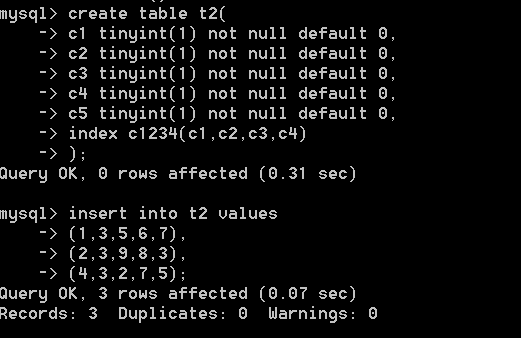
对于A:
c1=x and c2=x and c4>x and c3=x <==等价==> c1=x and c2=x and c3=x and c4>x
因此 c1,c2,c3,c4都能用上. 如下:
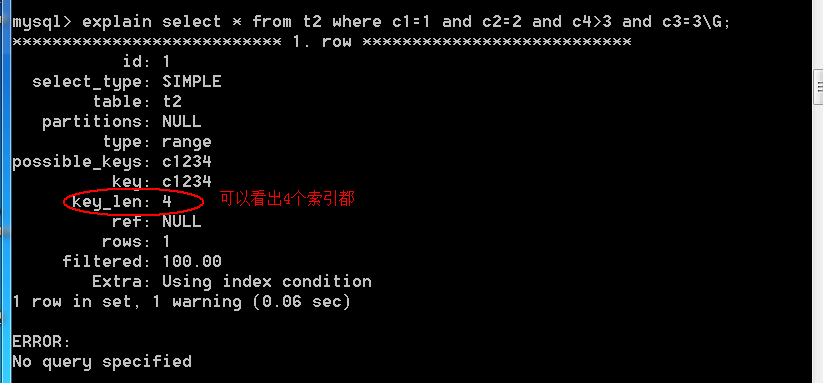
对于B:
select * from t4 where c1=1 and c2=2 and c4=3 order by c3
c1 ,c2索引用上了,在c2用到索引的基础上,c3是排好序的,因此不用额外排序.
而c4没发挥作用.
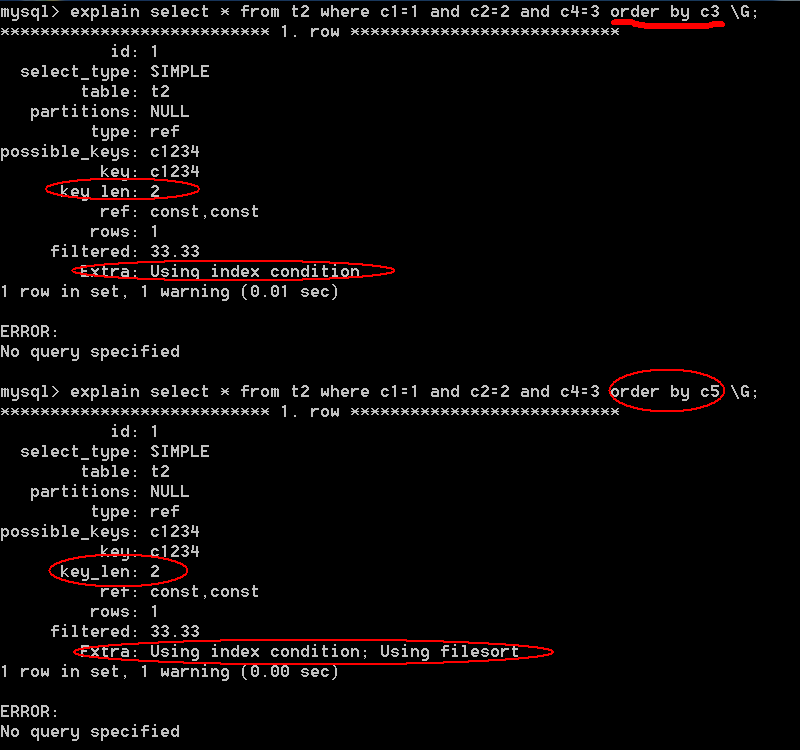
如果用c5排序,因为c5不是索引,所以,要额外用到filesort进行排序
对于 C:
只用到c1索引,因为group by c3,c2的顺序无法利用c2,c3索引
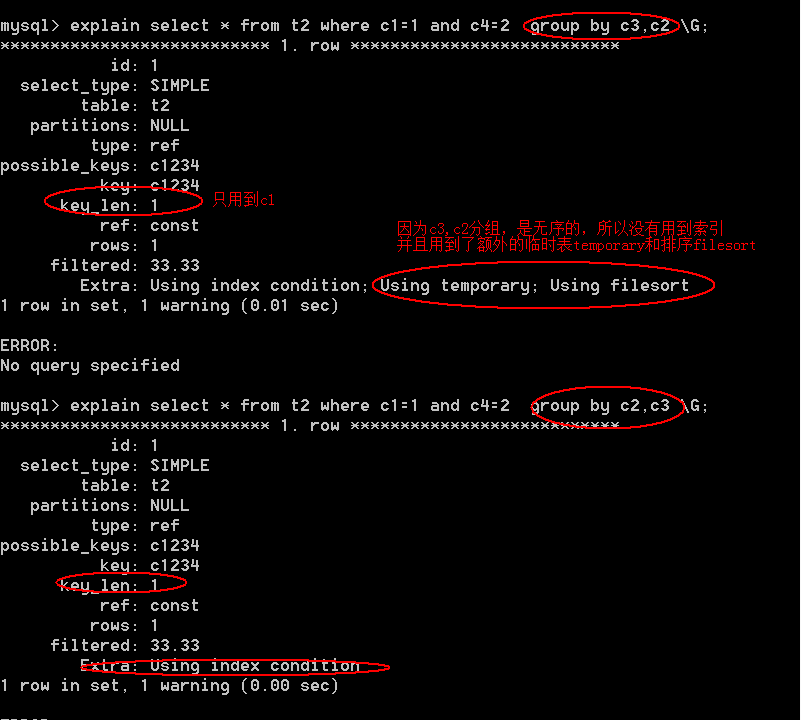
D语句:
C1确定的基础上,c2是有序的,C2之下C3是有序的,因此c2,c3发挥的排序的作用.
因此,没用到filesort
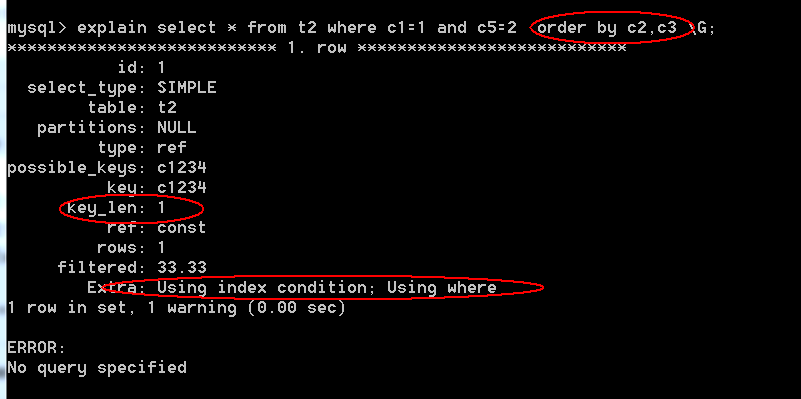
E:
这一句等价与 elect * from t4 where c1=1 and c2=3 and c5=2 order by c3;
因为c2的值既是固定的,参与排序时并不考虑
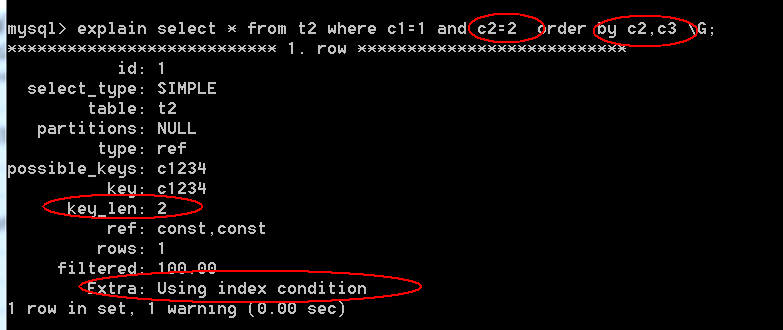






详细带命令版)
)






)




